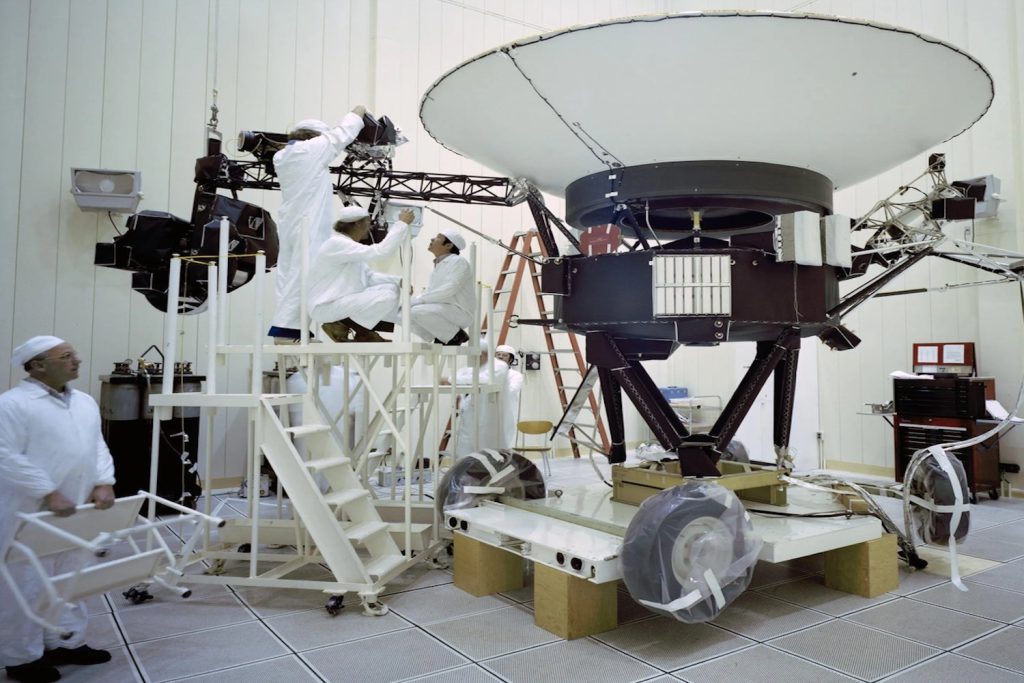NASA’s aging interstellar probe is gradually losing power, forcing the space agency to shut down one of its science instruments to conserve its energy.
Launched in 1977, NASA’s Voyager 2 mission has been probing the outer bounds of the solar system at a distance of 12.8 billion miles (20.5 billion kilometers) from Earth. All that time journeying through the cosmos has taken a toll on the iconic probe, and NASA is doing everything it can to extend the life of Voyager 2 for as long as possible.
On Tuesday, NASA announced that mission engineers have turned off the plasma science instrument on board Voyager 2 due to its shrinking electrical power supply. The spacecraft still has four functioning science instruments on board to measure various elements of interstellar space, but it will no longer be able to detect the amount of plasma (or electrically charged atoms) and the direction it is flowing.
This was a last resort for NASA, but it had to be done. The twin probes, Voyager 1 and 2, are powered by decaying plutonium and lose about 4 watts of electrical power each year, according to NASA. During its journey to interstellar space, Voyager 2 visited Jupiter in 1979, Saturn in 1981, Uranus in 1986, and Neptune in 1989. Its flyby of Neptune set it on a course below the ecliptic plane that eventually led it to reach interstellar space in 2018.
After the mission completed its tour of the giant planets in the 1980s, the team behind the mission turned off several science instruments that would no longer be useful for exploring interstellar space. That helped the spacecraft save power, but the continual decay of its generators is catching up to Voyager 2.
Last year, NASA implemented a clever hack that enabled Voyager 2 to rely on a small amount of backup power provisioned for an onboard safety mechanism designed to protect the craft from potentially damaging voltage spikes. Turning off a science instrument was, however, inevitable.
On September 26, NASA engineers issued the command to turn off the plasma instrument, which took 19 hours to reach the distant probe and another 19 hours for it to return a signal. NASA confirmed that the switch-off command was executed, and the spacecraft is operating normally afterward.
The plasma instrument is made up of four cups, three of which are pointed towards the Sun to observe the solar wind, while the fourth is angled to observe the plasma in planetary magnetospheres, the heliosphere, and interstellar space. The instrument was crucial in determining that Voyager 2 had left the heliosphere, the giant bubble around the Sun and its planets, and made its way to interstellar space by detecting the change in atoms, particles, and magnetic fields.
NASA chose to let go of the plasma science instrument because it proved to be less useful once the probe was in interstellar space. After Voyager 2 exited the heliosphere, the amount of plasma measured by three of the cups dropped off significantly, while the fourth cup has collected limited data due to its orientation relative to the direction that plasma is flowing in interstellar space.
Voyager 1 and 2 are the interstellar probes that keep on going despite years of enduring the harsh environment of space. NASA estimates that Voyager 2 has enough power to keep operating with at least one science instrument until the 2030s, which means the space agency will have to gradually turn off the spacecraft’s instruments one by one until it is no more.
More: NASA’s Voyager Has Made a Full Recovery After Glitch Nearly Ended the Historic Mission

